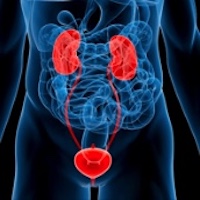 Smart Citations
Smart CitationsSee how this article has been cited at scite.ai
scite shows how a scientific paper has been cited by providing the context of the citation, a classification describing whether it supports, mentions, or contrasts the cited claim, and a label indicating in which section the citation was made.
Clinical results of shock wave lithotripsy treatment in elderly patients with kidney stones: Results of 1433 patients
Objective: In this study, it was aimed to evaluate the efficacy and safety of SWL treatment in elderly patients with kidney stones. Materials and methods: Data from a total of 3024 patients who underwent SWL treatment for urinary tract stone disease in three centers of our university were evaluated retrospectively. A total of 1433 patients in the adult age group treated for single kidney stones were included in the study. The patients were divided into 3 groups (18-40, 41-64 and ≥ 65) years depending on their age. Demographic data, stone parameters, stone-free rate (SFR) and clinically insignificant residual fragment (CIRF) rate, number of SWL sessions and complication rate were analyzed according to the age groups. Results: The mean age of the patients was 47.38 ± 13.24 years. Stone size was significantly lower in the 18-40 years age group compared to other groups (p = 0.000) and the stones were mostly located on the right side in this age group (p = 0.007). There was no significant relationship between age groups and gender, stone localization, and number of SWL sessions. The overall SFR was 66.4%. Although the SFR was lower (61.4%) and the rate of multiple sessions (27.2%) was higher in ≥ 65 years group, there was no statistically significant difference between age groups regarding SFR, CIRF, need for additional sessions, and complication rates. Conclusions: Due to its similar clinical results, treatment of SWL should not be ignored as a treatment option in the geriatric patient group with kidney stones.
How to Cite
PAGEPress has chosen to apply the Creative Commons Attribution NonCommercial 4.0 International License (CC BY-NC 4.0) to all manuscripts to be published.

 https://doi.org/10.4081/aiua.2020.4.350
https://doi.org/10.4081/aiua.2020.4.350




